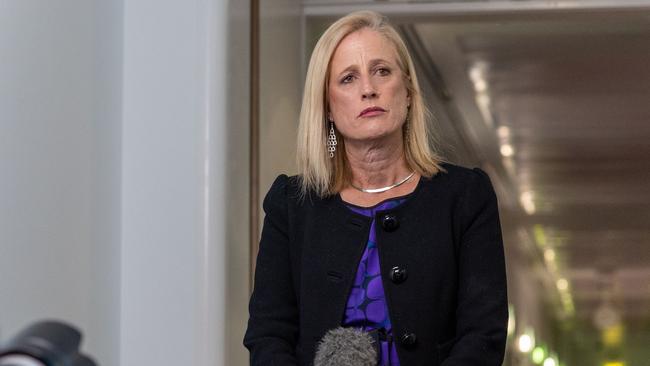Innovation thwarted by inertia, false promises and a federal government that won’t listen
We cannot sit back and wait while the federal government cuts $4m in funding then announces yet another review into a sector plagued by inertia and inaction.

The greatest cost to innovation is inertia and false promises. Or a federal government that simply does not want to listen.
Since 2014, we have seen successive governments move to cut funding towards Women in Technology and STEM entrepreneurship initiatives. Last year, the Albanese government committed to implementing gender-responsive budgeting, a welcome step towards “embedding gender equality into the design of policy and government decision-making”.
It then proceeded to cut $3.9m from the Supporting Women’s Mid-Career Transition into the Tech Workforce initiative. What we need is not public posturing and a plethora of promises, but real decisive action and reform.
According to the government’s STEM equity monitor, women in STEM industries earned 18 per cent less than men on average in 2021, the same year when the gender pay gap increased to 15 per cent. Women-led start-ups receive just 3 per cent of global venture capital investment and in Australia, that figure dropped to 0.7 per cent in 2021, according to figures from Deloitte.
Fintech Australia’s 2022 Fintech Census admitted that the local fintech industry continues to struggle with diversity, equality and inclusion with the representation of women remaining low at all levels: just one in three in the sector are women (34 per cent in 2022) and less are founders or in leadership roles (28 per cent).
At last year’s Jobs and Skills Summit, Science Minister Ed Husic himself said that women remain “chronically under-represented in STEM”, making up just 16 per cent of people with STEM qualifications.

As we celebrate International Women’s Day, this is not a conversation we could have, it’s a conversation we must have.
Cracking the code means grappling with gender inequality. It means having the courage to confront past policy missteps.
It’s fantastic to finally have a Minister for Finance who is a woman, and I have no doubt Katy Gallagher will be doing everything to bring a gender responsive budget down in May.
However, the average per annum investment over eight years for all community programs supporting women in science, technology, engineering, maths and entrepreneurship is little more than $2.5m per year.
It’s barely enough to keep a couple of gender-based science organisations going, let alone the full gamut of IT projects out there looking for sustainability to make change.
Research by the Tech Council that shows tech jobs are an important new source of opportunity for Australians around the country, with 860,000 people – or 1 in 16 working Australians – in tech jobs today.
It’s great to see the Albanese government has committed to achieving 1 million tech jobs by 2030, but women must be part of that solution. All of those jobs must go towards women if we want to address the gender imbalance.
Cracking the code means creating a national fund immediately to support careers in STEM at a grassroots level, allowing schools to engage girls in programming and coding, as well as encouraging more large corporates to offer tech work-experience for girls.

It means backing a national artificial intelligence education program like our A.I. High program to ensure girls are getting experience with the latest in emerging technologies like AI and machine learning. More hackathons across Australia like “SheHacks” and career incubator programs like “SheMakesGames” will encourage cross-sector participation and support, helping drive engagement with a growing cohort of women like never before.
And cracking the code means celebrating the achievements of our best and brightest, setting up early career programs to mentor-match aspiring young women with existing female leaders in our industry.
Most of all, it means ensuring more women-led, early stage start-up companies are supported and lifting the number of women angel investors and venture capitalists.
As we celebrate International Women’s Day, what we need is brutal honesty and bold reform, not more cupcakes and commitments.
My four co-founders and I started Girl Geek Academy in 2014 with the aim of creating more pathways for young girls and women in the industry, helping them take the step towards a career in technology.
We can’t continue to solve the problem of women’s underemployment and lack of access to investment funds through siloed women’s initiatives that continue to remain under-represented and underfunded.
Last Friday, the federal government launched the consultation period for its Diversity in STEM Review which it says will provide “the evidence, insight and recommendations” needed for lifting participation of women in science, technology, engineering and math industries.
It’s time for the government to act. We cannot sit back and wait while the government announces yet another review into a sector plagued by inertia and inaction.
For Australia to lead the way on diversity in the tech sector, a full gendered lens needs to be applied. The National Gender Equality Strategy, the Women’s Economic Equality Taskforce and the National Science Review must include commitments to redressing gender discrimination in our digital industries and in government-backed investment for women led start-ups and entrepreneurs. Having a brake on funding breaks us.
Cracking the code means ingenuity and innovation should go hand-in-hand with equal opportunity for all.
Sarah Moran is the founder of Girl Geek Academy, a social enterprise dedicated to achieving gender equality in the technology industry.





To join the conversation, please log in. Don't have an account? Register
Join the conversation, you are commenting as Logout